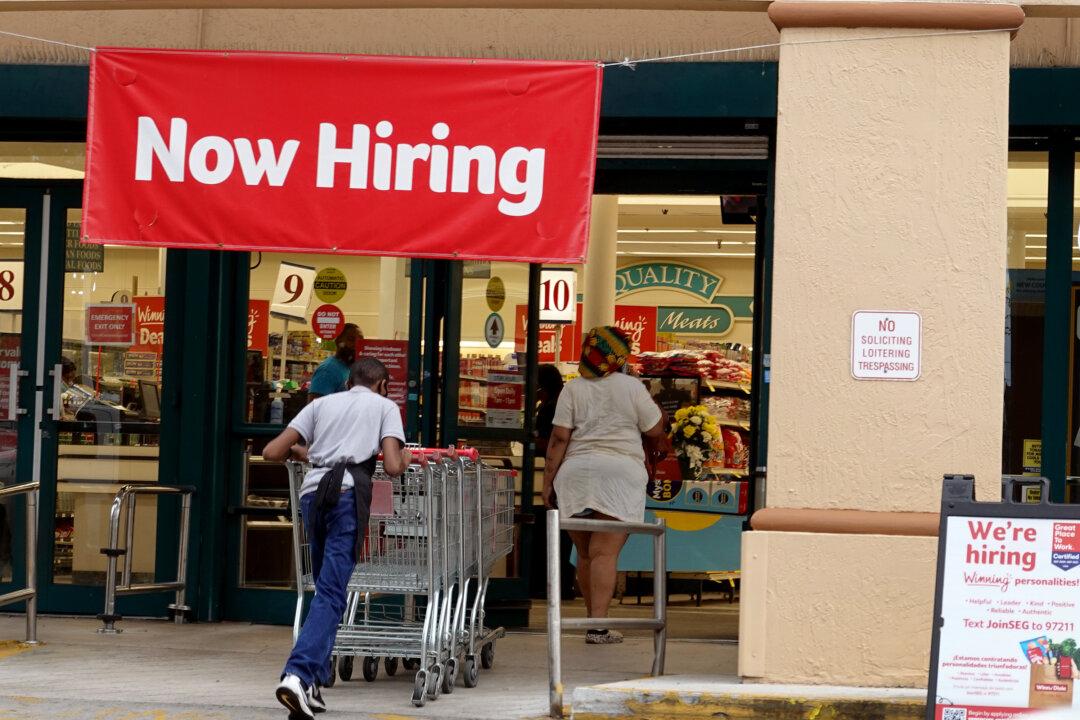
A Now Hiring sign hangs near the entrance to a Winn-Dixie Supermarket in Hallandale, Fla., on Sept. 21, 2021. Joe Raedle/Getty Images
The U.S. economy added 467,000 new jobs in January, topping the market estimate of 150,000, new Bureau of Labor Statistics (
BLS) data show.
The unemployment rate edged up to 4 percent, from 3.9 percent in December. That matched the median expectation.





